History 101 Exam 2 Mixson
1/28
There's no tags or description
Looks like no tags are added yet.
Name | Mastery | Learn | Test | Matching | Spaced |
|---|
No study sessions yet.
29 Terms
509 BCE
Overthrow of Tarquin/Founding of Roman Republic
44 BCE
Assassination of Julius Caesar
31 BCE
Battle of Actium
50 CE
Earliest letters of Paul of Tarsus
312 CE
Conversion of Constantine
410 CE
Visigoths sack Rome
534-553 CE
Justinian's Wars
622 CE
Hijrah
749 CE
Beginning of Abbasid Caliphate
800 CE
Charlemagne Crowned Emperor
843 CE
Treaty of Verdun
1095 CE
Urban II calls first crusade
c1200
Founding of the University of Paris
Altar of Peace (13 BCE)
The "Altar of Peace" (Ara Pacis) is an ancient Roman altar located in Rome, Italy, and it was dedicated in 13 BCE. It is a remarkable and well-preserved piece of Roman art and architecture.
Basic Information:
The Ara Pacis is a large rectangular altar made of white marble, and it was built to celebrate the return of Emperor Augustus from his military campaigns in Spain and Gaul.
The altar is adorned with intricate relief sculptures that depict various scenes and figures. The primary frieze on the exterior of the altar is the most famous, featuring a procession of figures, including members of the imperial family, priests, and other prominent individuals.
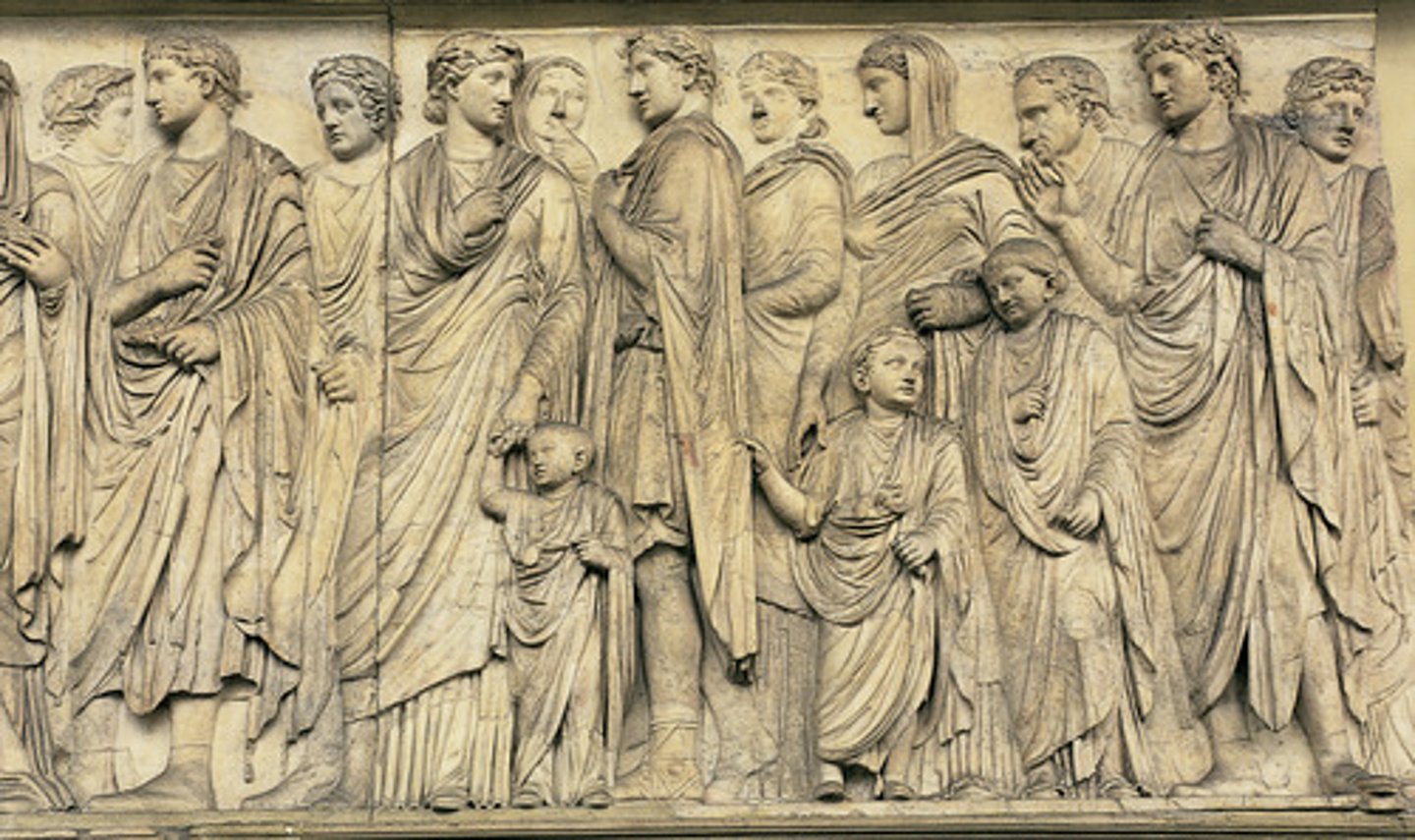
The Arch of Titus (81 CE)
The Arch of Titus is an ancient Roman triumphal arch located in the Roman Forum in Rome, Italy. It was constructed in the late 1st century CE, specifically between 81 and 96 CE, during the reign of the Roman Emperor Domitian, in honor of his older brother, the Emperor Titus. The arch commemorates Titus's victory in the Jewish War, particularly the siege and conquest of Jerusalem in 70 CE. It is one of the most iconic and well-preserved examples of Roman triumphal arches.
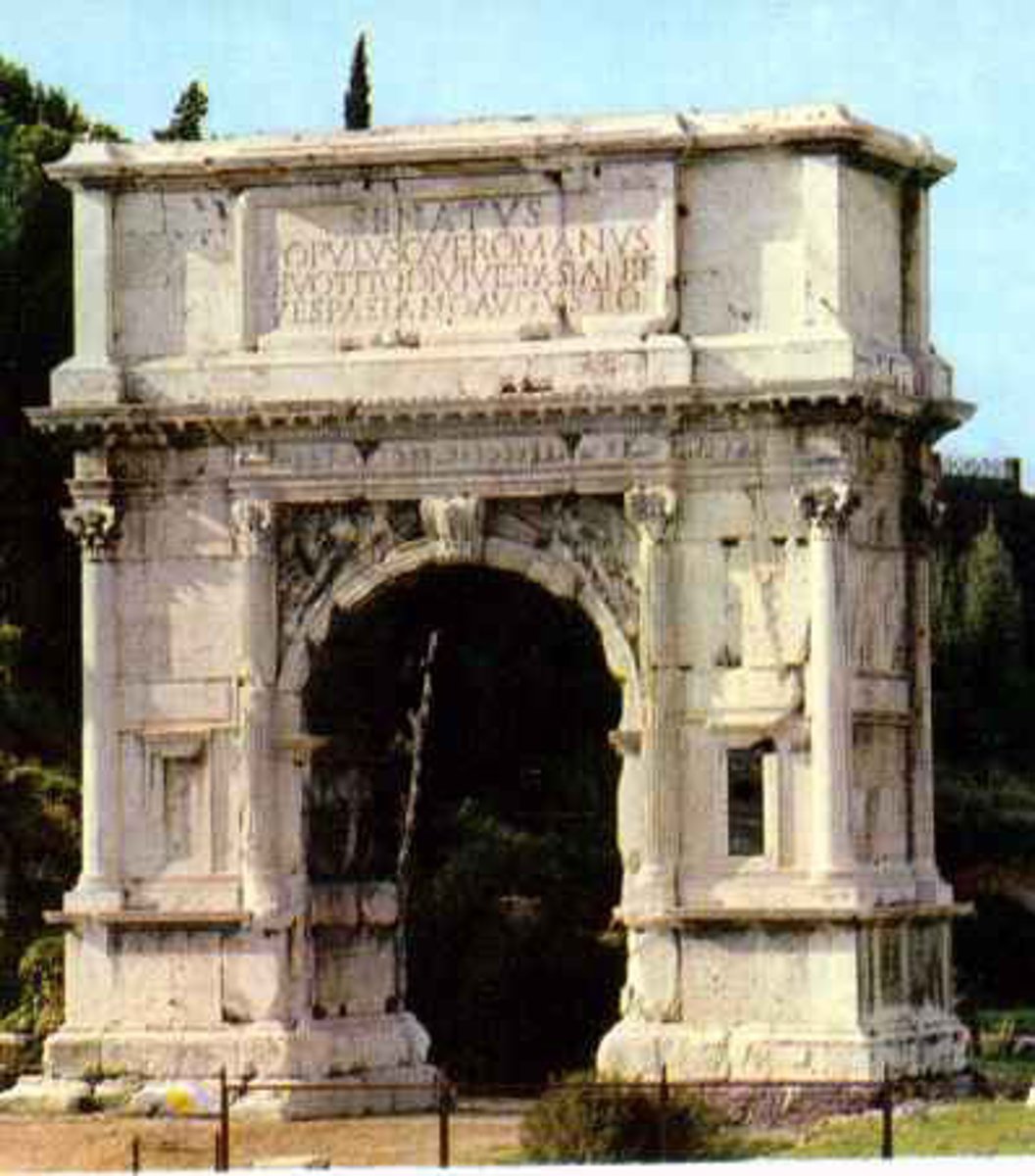
Representation of the Tetrarchy (Milan) c. 300 CE
The Representation of the Tetrarchy in Milan is a porphyry sculpture, also known as the "Tetrarch Group." It consists of four nearly identical, robed emperors standing side by side. These emperors are identified as the rulers of the Tetrarchy, a system of government established by Emperor Diocletian in the late 3rd century CE to address the Roman Empire's problems of governance and stability.
The four emperors depicted are Diocletian, Maximian, Galerius, and Constantius Chlorus. Each figure is portrayed as nearly identical in appearance, wearing military attire and holding a globe.
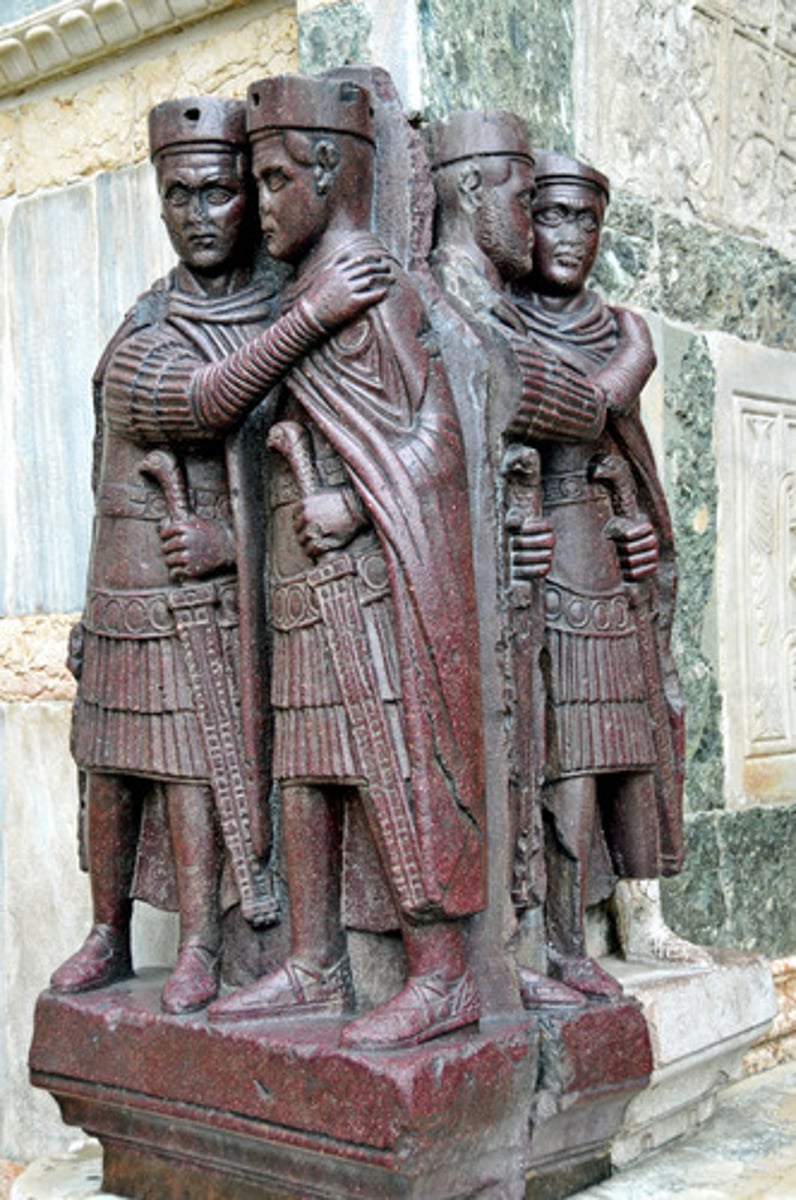
Medallion of Theodoric the Ostrogoth c. 525 CE
The Medallion of Theodoric the Ostrogoth is a prominent historical artifact from the early 6th century CE, dating to around 525 CE. It is a round, carved stone medallion, and it features a detailed relief portrait of Theodoric the Great, who was the king of the Ostrogothic Kingdom in Italy from 493 to 526 CE.The medallion is one of the few surviving contemporary depictions of Theodoric the Great. It provides valuable insights into the appearance and image of this Ostrogothic king, who played a significant role in the late Roman period and the early Middle Ages. Theodoric is shown as a mature and authoritative figure with distinctive facial features, including a beard and a diadem.

Hagia Sophia (c. 530 CE)
Hagia Sophia is a massive architectural marvel located in modern-day Istanbul, Turkey. It was originally constructed as a cathedral by the Roman Emperor Justinian I in the 6th century.
The original Hagia Sophia was completed in 537 CE, making it one of the earliest and most important examples of Byzantine architecture.
Hagia Sophia is a testament to the architectural and engineering prowess of the Byzantine Empire. Its dome, with its innovative use of pendentives and semi-domes, served as an inspiration for many subsequent architectural projects in the Western world. The techniques developed in constructing Hagia Sophia had a lasting impact on the development of domed structures in Western architecture.
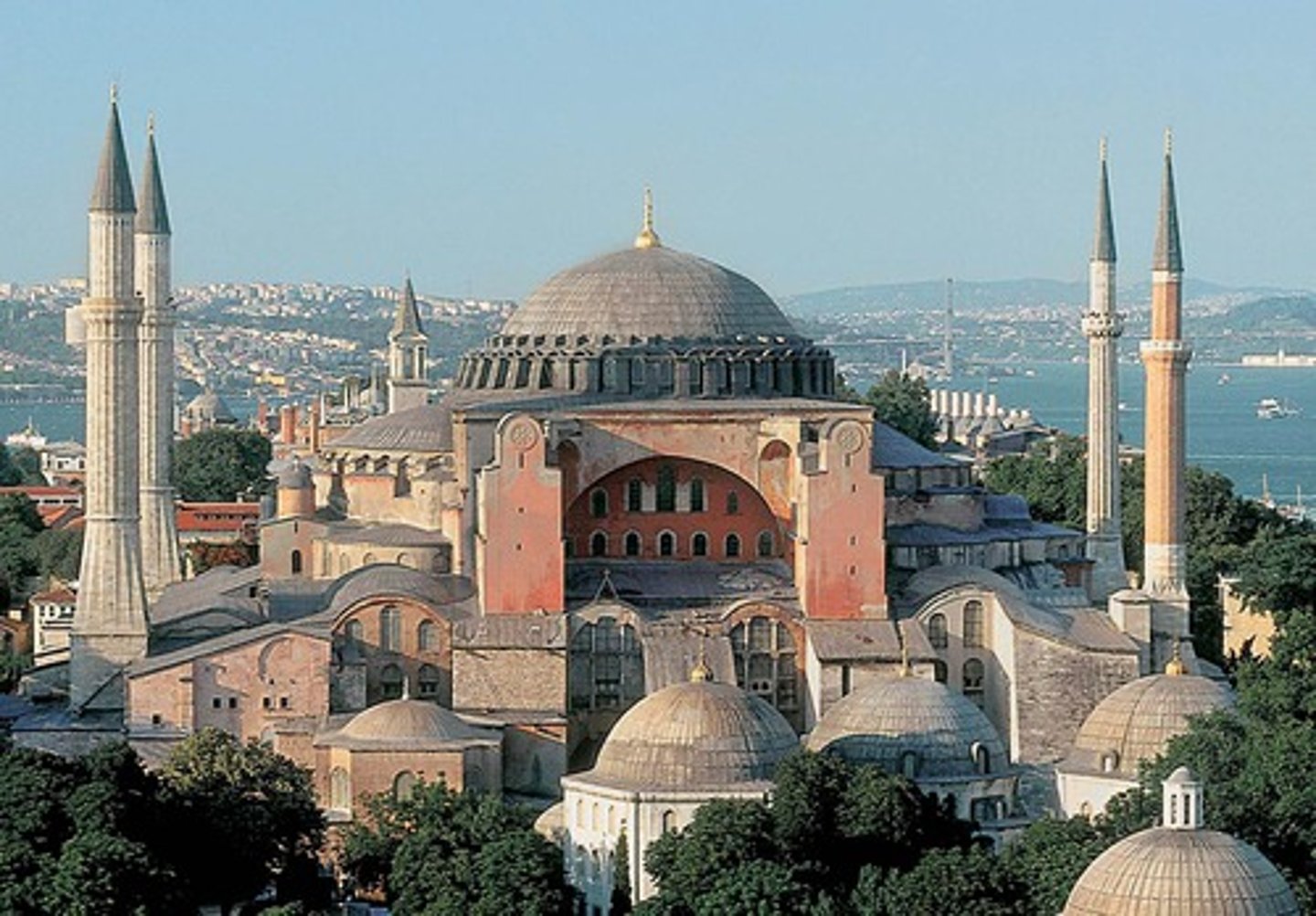
Hagia Sophia (c. 530 CE) pt 2
see previous definition
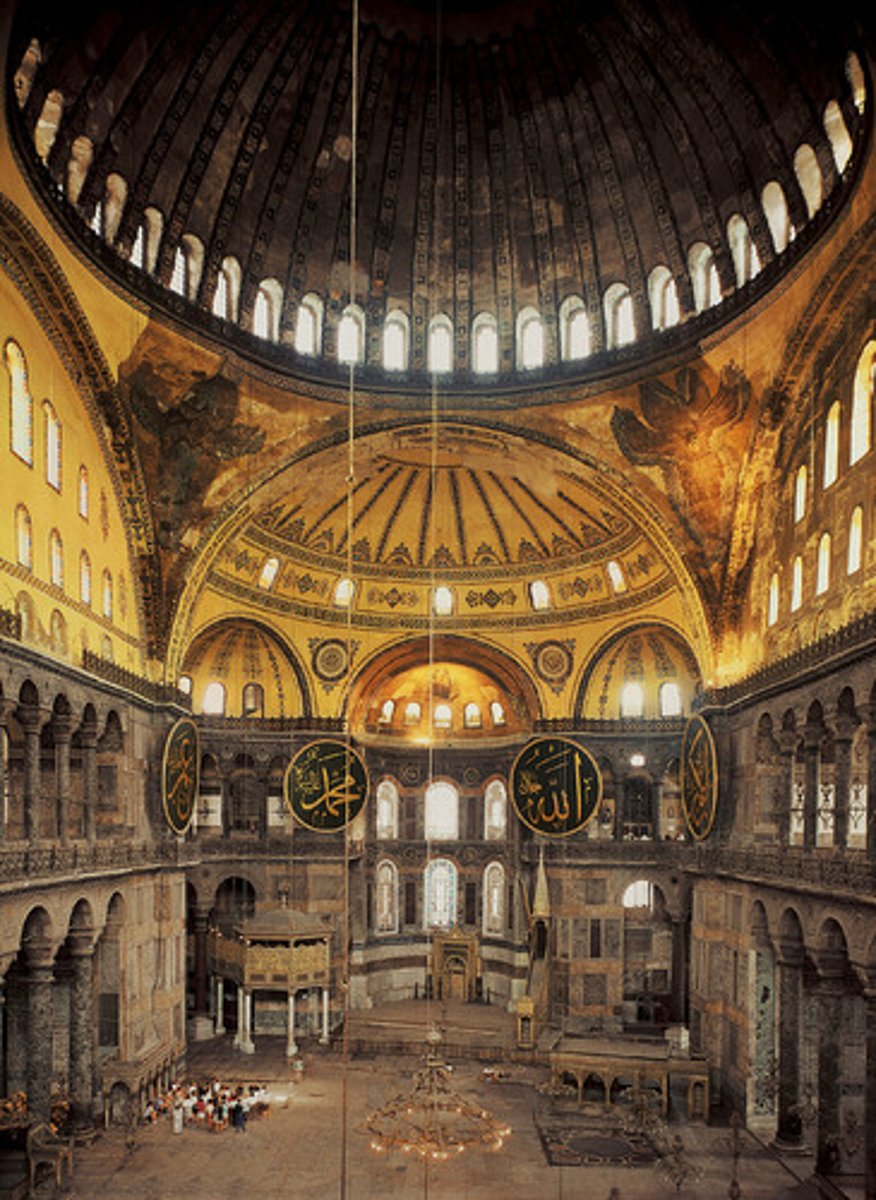
Kaaba, Mecca (c. 600 CE)
The Kaaba, located in Mecca, Saudi Arabia, is a sacred and iconic structure in Islam. It holds immense religious significance for Muslims around the world.
Historical and Religious Significance: The Kaaba has been a place of pilgrimage and worship for centuries. It is believed to have been originally constructed by the Prophet Ibrahim (Abraham in Judeo-Christian tradition) and his son Isma'il (Ishmael), making it a site with shared religious significance for Muslims, Jews, and Christians. This historical connection underscores the common Abrahamic heritage of Western civilization.
Spread of Islam: The significance of the Kaaba extends to the global spread of Islam. It is the direction (qibla) to which Muslims all over the world turn during their daily prayers, symbolizing the unity of the Muslim community (umma).
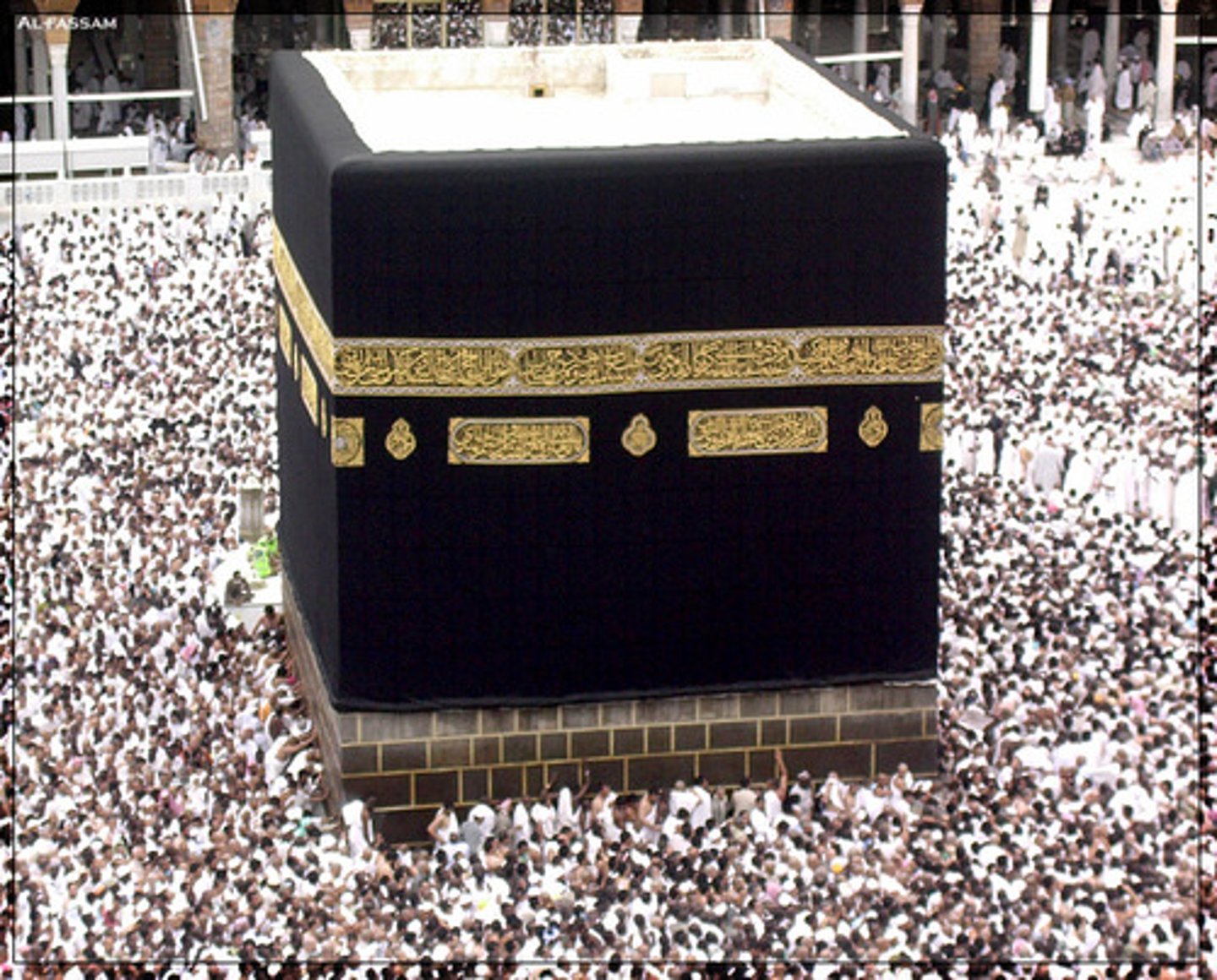
Great Mosque of Damascus, c. 715
The Great Mosque of Damascus, also known as the Umayyad Mosque, is an ancient and historically significant architectural structure located in Damascus
The Great Mosque of Damascus was built during the Umayyad Caliphate, and it serves as a significant historical and architectural testament to the early expansion and influence of Islam. The Umayyad Caliphate was one of the first major Islamic empires, and its architectural and cultural achievements played a role in shaping Islamic civilization.
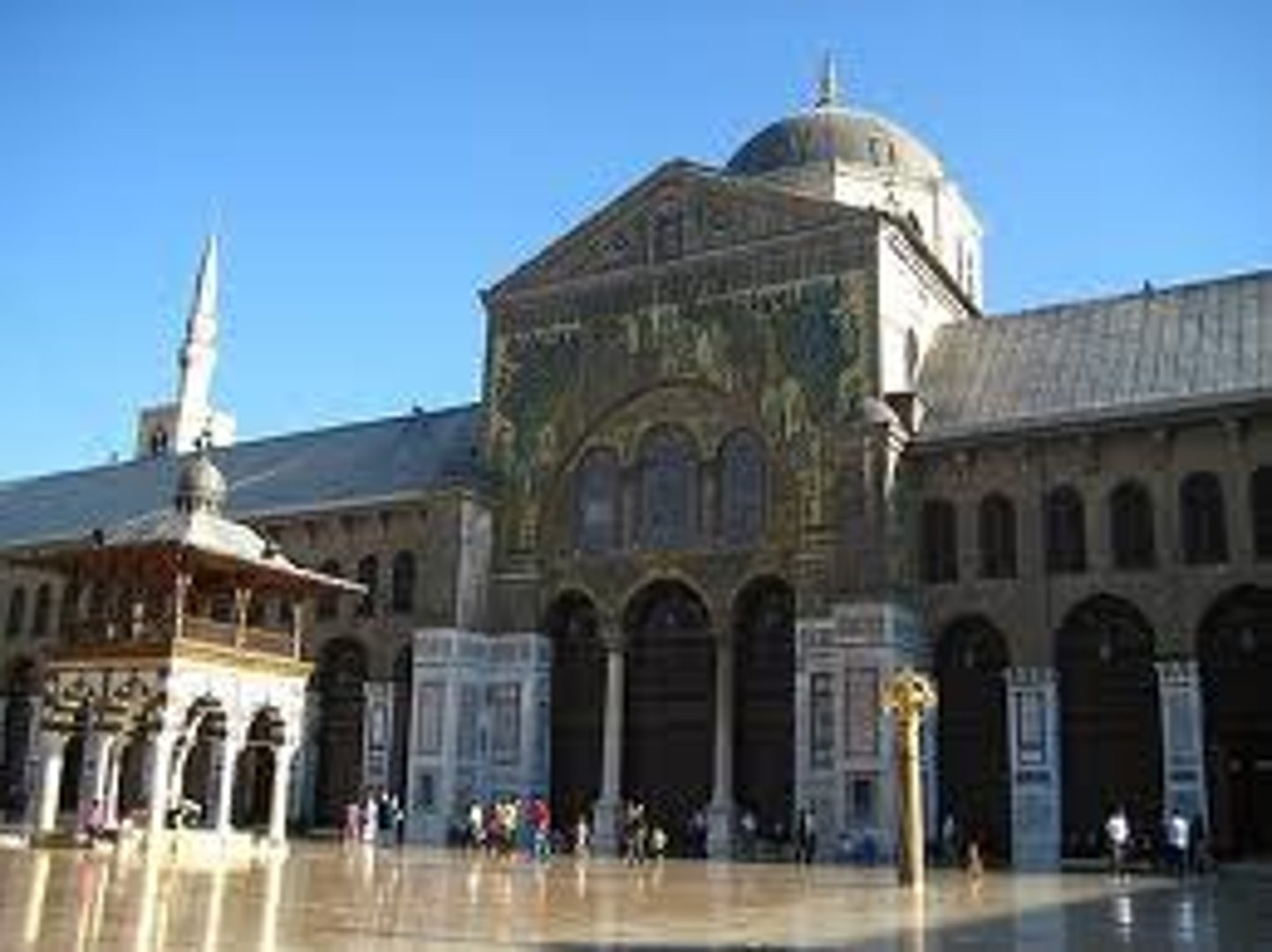
The "Franks Casket" (c. 700)
The Franks Casket is a small, intricately carved Anglo-Saxon artifact dating from the early 8th century. It is notable for its intricate panel decoration, which features a mix of Old English runic inscriptions and pictorial representations. The Franks Casket is an important artifact from the Anglo-Saxon period, reflecting the artistic and cultural achievements of the early medieval Germanic peoples in what is now England. It is one of the few surviving objects that offer insight into the artistic traditions of the time.
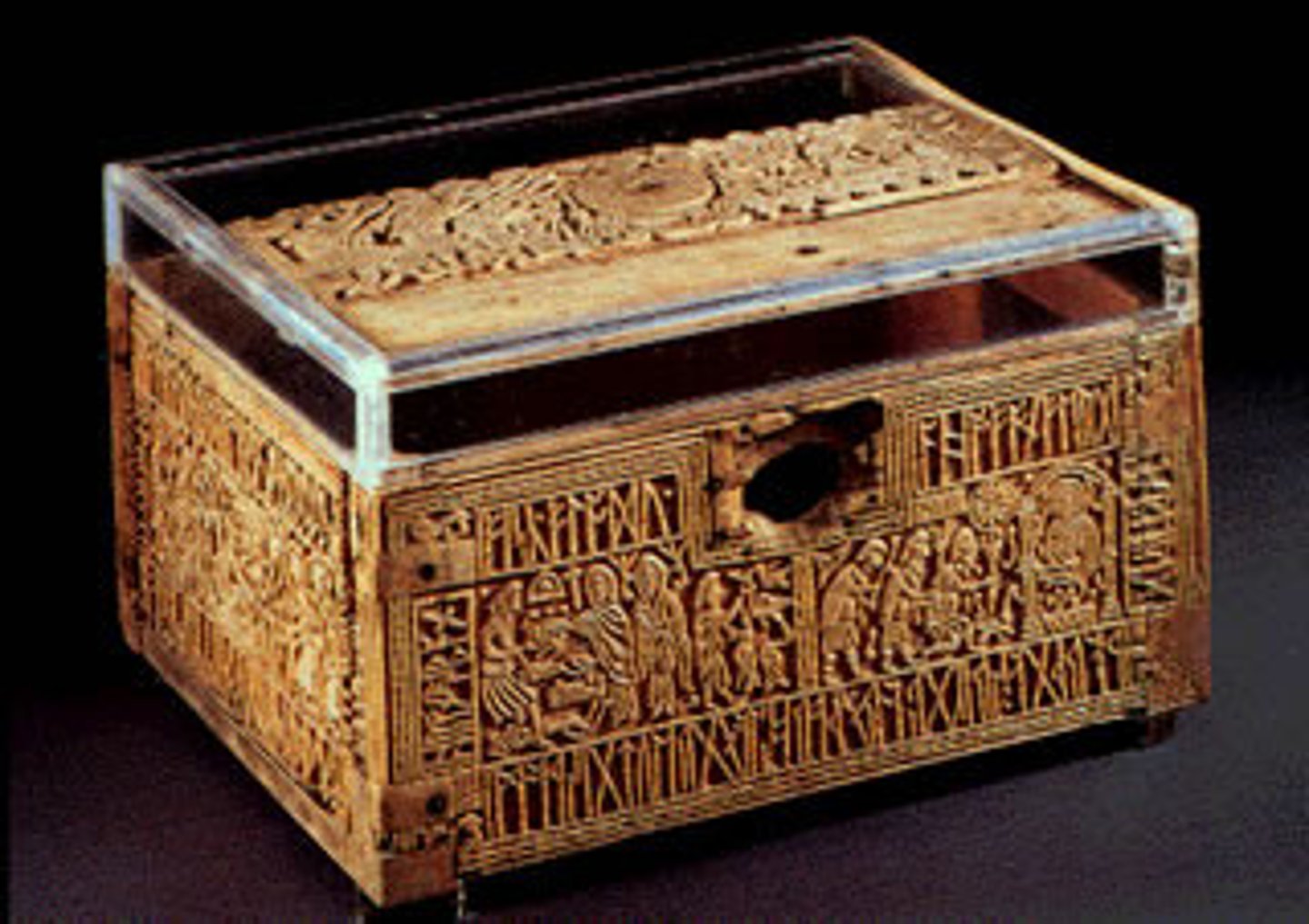
The "Franks Casket" (c. 700) (side view)
pt 2

"Eighteen anglo saxon
" (c. 700 CE)
skeleton with bones
Palace Chapel, Aachen (c. 800)
The Palace Chapel in Aachen, also known as the Palatine Chapel or Aachen Cathedral, is an architectural masterpiece located in Aachen, Germany. Shaped like an octagon. Charlemagne and the Carolingian Renaissance: The Palace Chapel is closely associated with Charlemagne, one of the most important figures in Western European history. His reign marked a revival of learning and culture known as the Carolingian Renaissance. The Palace Chapel was a center of cultural and intellectual activity, playing a significant role in the renaissance of Western civilization.
Architectural Innovation: The chapel's octagonal design and use of classical and Byzantine architectural elements were innovative for its time. It served as a model for subsequent Carolingian and Ottonian architecture, influencing the development of church architecture in Western Europe.
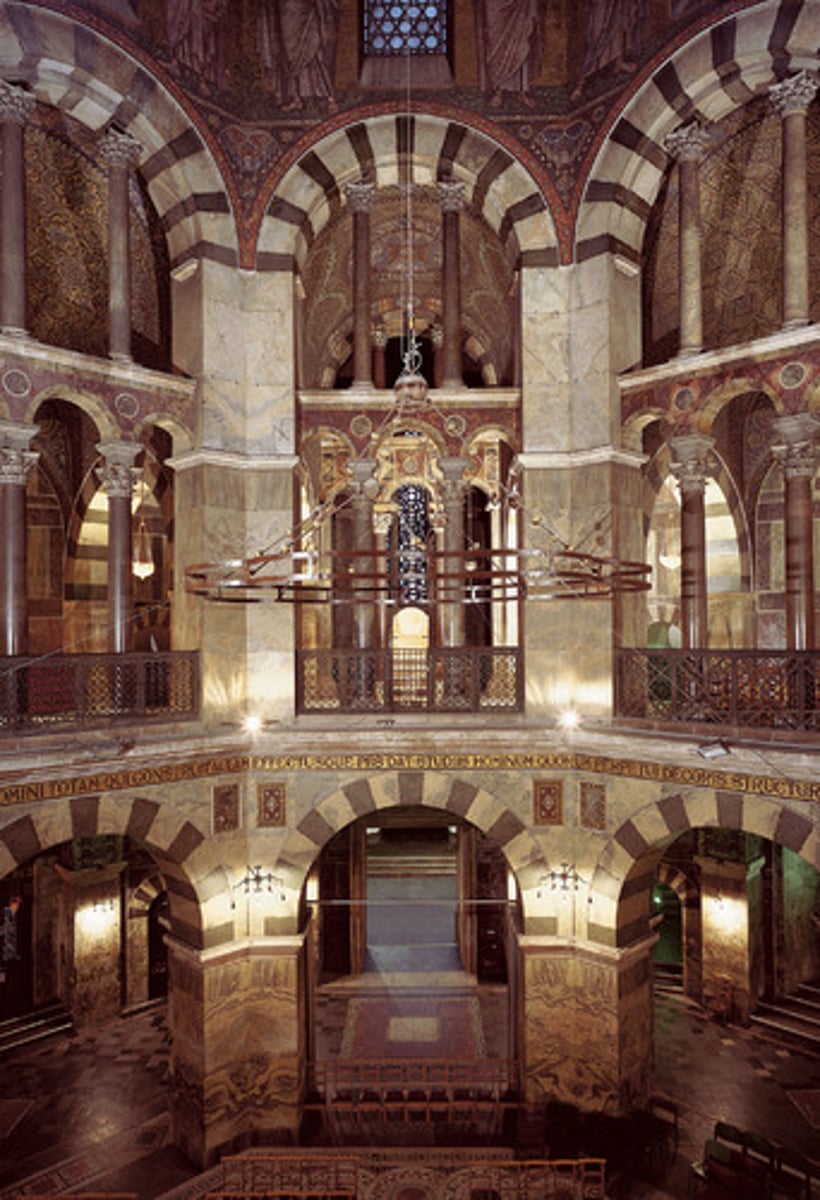
Praying crusader (c. 1150)
The term "Praying Crusader" typically refers to a common motif found in medieval Christian art and literature. The representation of the "Praying Crusader" in art and literature highlights the complex relationship between warfare and religion in medieval Europe. It reinforces the idea that, for many crusaders, their campaigns were not only about territorial conquest but also a deeply religious endeavor. It emphasizes the spiritual aspect of the knightly code and the profound influence of religious devotion on the cultural and artistic expressions of Western civilization during the Middle Ages.

Bologna, Italy (c. 1300 CE)
two towers in a city
Gold ducat, Venice c. 1330 (U of A)
A gold ducat from Venice, dating to around 1330, is a historical coin issued by the Republic of Venice. Venice, during the Middle Ages and the Renaissance, was a major maritime and trading power in Europe. The gold ducat served as a symbol of Venetian economic and financial strength. It was widely accepted and used for trade across the Mediterranean and beyond, contributing to Venice's wealth and influence.
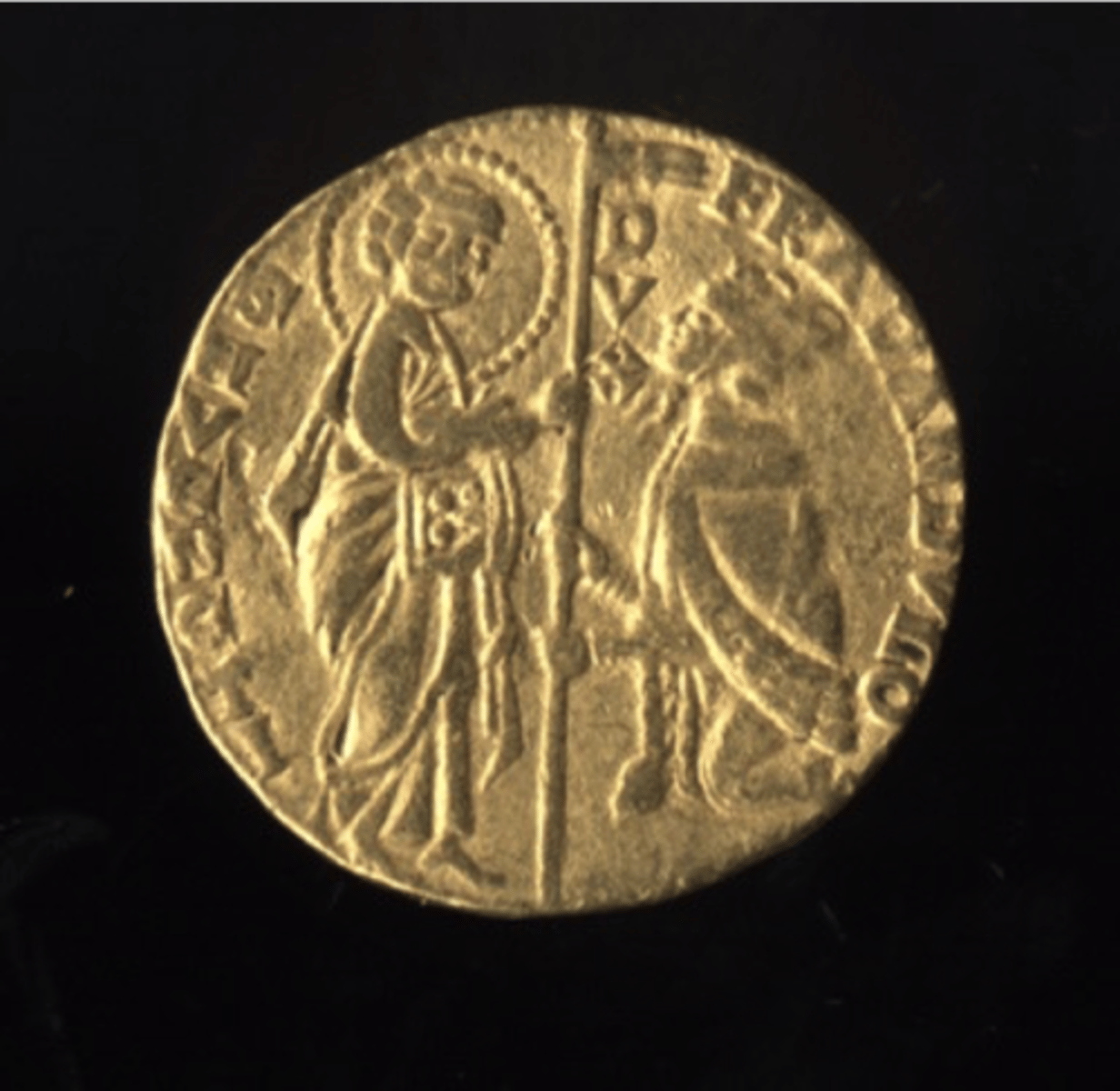
University classroom c. 1400
The 15th century was part of the late Middle Ages, and it was a period when universities in Western Europe were flourishing. These universities were often associated with the church and were centers of learning, scholarship, and the transmission of knowledge. In summary, university classrooms in the 15th century were integral to the preservation, transmission, and transformation of knowledge, playing a vital role in the intellectual and cultural development of Western civilization. They laid the groundwork for significant intellectual and cultural movements that shaped the course of history in subsequent centuries.